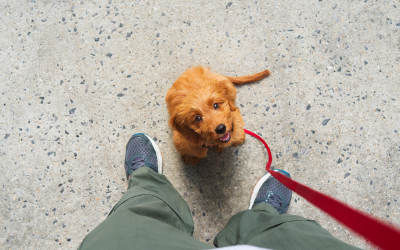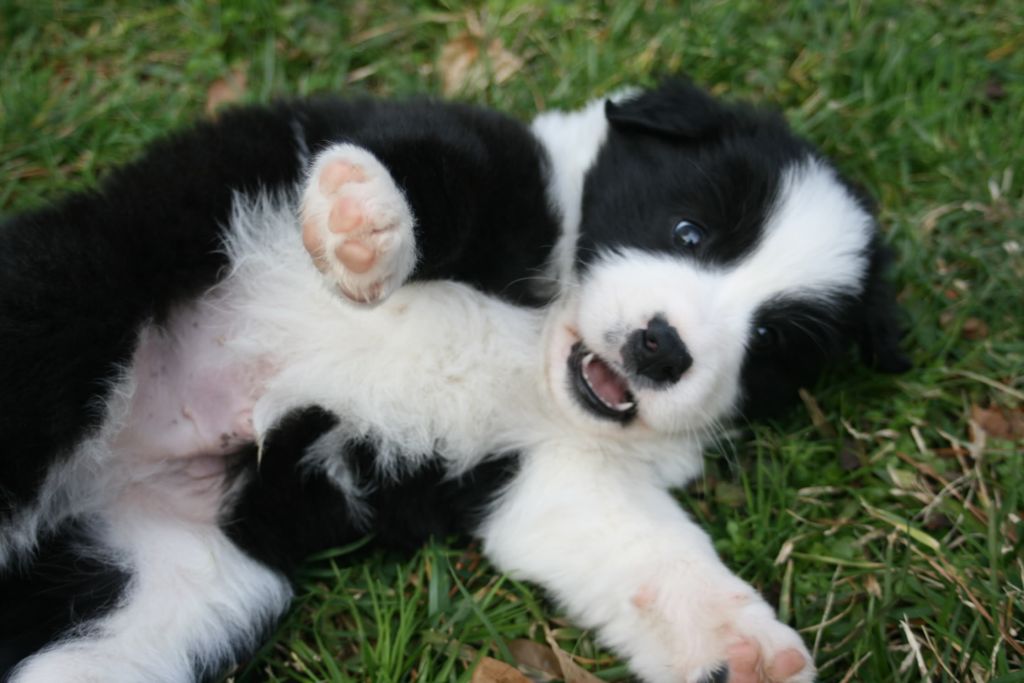Imagine a secret pathway to transform your puppy into a confident, socially savvy dog. What if a suitable puppy class could be the key to unlocking your dog’s potential? Most new puppy owners don’t realize that puppy classes are not about meeting as many dogs and people as possible or learning to sit and shake a paw. Puppy classes are a critical window of opportunity to shape your dog’s future, so they must be done well.
This post pulls back the curtain on puppy classes, showing how strategic, positive experiences can shape your puppy into a dog who navigates the world with grace, resilience, and an insatiable desire to explore. Prepare to discover the art and science of raising an extraordinary dog… starting with puppy classes.
Unfortunately, some vets believe all puppies should be fully vaccinated before starting puppy classes. If your vet is one of those, keep reading!
According to the American Veterinary Society of Animal Behavior’s Position Statement on Puppy Socialization, “the primary and most important time for puppy socialization is the first three months of life. During this time, puppies should be exposed to as many new people, animals, stimuli and environments as can be achieved safely and without causing overstimulation manifested as excessive fear, withdrawal or avoidance behavior. For this reason, the American Veterinary Society of Animal Behavior believes that it should be the standard of care for puppies to receive such socialization before they are fully vaccinated.”
In general, puppies can start puppy socialization classes in an appropriate wee-baby puppy class as early as 7–8 weeks. Your puppy should have had at least one set of vaccines and a deworming at least 7 days before the first class, and stick to the vet’s guidelines for further vaccinations during the class period (typically every 3–4 weeks).
Note: Bordetella is an optional/recommended vaccination, but your puppy may be required to attend class, particularly if the space is shared with another dog business. Check your class requirements and speak with your vet.
This article by veterinarian Dr. Rachel Szumel explains the balancing act of protecting your puppy from disease and behavior concerns due to a lack of socialization.
When in doubt, puppy sits out
Puppies are encouraged to visit safe, clean environments, but this does not mean that you should allow your puppy to interact freely at high-traffic areas where adult dogs may or may not be vaccinated or socially healthy. Talk to your veterinarian about specific situations or areas that you’re unsure about.
Questions for the group class instructor
How many puppies are in the class?
The number should be reasonable to the space and number of instructors teaching and give everyone adequate space. You might ask if each student gets some one-on-one time with the instructor. I like no more than five puppies maximum per trainer/assistant, but experienced trainers may run larger classes. The benefit of a larger class is more puppy play options! If you have a shy puppy, there will likely be at least one gentle playmate in a larger class. If your puppy is the hulk-smash type, they can find a pal or even a squad in a larger class.
How do you manage puppy playtime?
A good puppy class will ensure that all the puppies are having a good time by separating the more spirited puppies from the shy puppies and facilitating positive play. Puppies should always be allowed to opt out of playtime and hide by their owners if they want to.
Balancing playtime for early exposure while encouraging focus on their owner takes skill! An experienced instructor will help owners recognize signs of over-arousal and stop play that encourages bad habits.
Are the puppy classes separate from the adult classes?
The location where the puppy class is held should be clean and sanitized. Puppy classes should not be held directly after an adult dog class in the same area. Dogs over 6 months of age should be in the adult class. Bonus points if the instructor has separate courses for small-breed puppies!
Can I view a class?
An instructor should welcome viewers to their class. It’s a great way to introduce positive training! While you’re there, ask yourself, “Would my puppy and I look forward to coming to this class?”
What support do you offer?
Some may send home printouts or emails, and others may have online resources. Your instructor should provide you with support for your learning. Many people do not retain information demonstrated once in a class, so you should have support to learn the skills you need to train your puppy.
The format of a well-run puppy class includes
- Puppy Play Sessions: Controlled off-leash short play sessions (5 minutes) with other puppies in a secure environment.
- Sights and Sounds: Exposure to novel environments, people, objects, surfaces, and sounds in a fun and positive manner.
- Health and Handling: Instruction to help you prepare your puppy for routine procedures at home, in the veterinary hospital, and/or grooming facility.
- Puppy Parenting Tips: Education on normal canine body language, learning, problem solving, and puppy parenting.
- Calming and Focus: Calming exercises that encourage connection with their humans.
- Basic Puppy Manners: Training to address common puppy problems such as biting, jumping, chewing, stealing objects, food bowl safety, and house training.
“I’ve always had dogs.”
If the instructor says “I’m really good with dogs.” or “I’m a dog whisperer.” or “I took a two-week course,” keep looking. Dog training is a serious career and should be invested in as such.
What training equipment do you use?
Flat collars or harnesses are the preferred equipment used by force-free professionals. Clickers, treats, toys, and other motivators may also be used. Avoid those who encourage the use of aversives such as spray bottles, penny cans, prong, choke, or shock collars.
How did you become a dog trainer?
Look for someone specially trained in animal behavior, learning theory, canine development, and medical conditions and disorders. They should also have experience, knowledge, and credentials and value continuing education and growth. See more about choosing a dog trainer: 7 Crucial Qualities to Look for in a Dog Trainer.
What training philosophy do you use?
Look for a trainer who uses force-free, positive reinforcement–based methods for training puppies using praise, food treats, and games with toys. Those who promote themselves as “dominance-based” trainers or “balanced trainers” often use aversives to correct a puppy’s behavior, which can lead to issues such as fear, anxiety, and even aggression.
Note: A good puppy class does not guarantee that your dog will never be fearful (genetics and early experiences also play a role), but it will go a long way toward helping you meet your puppy’s socialization needs.
When you choose a trustworthy puppy class that nurtures curiosity as a life skill, you’re not just investing in training—you’re opening the door to a lifetime of confident exploration and joyful discoveries. Through carefully structured exposure and positive experiences, your puppy learns that the world is full of fascinating opportunities rather than threats to fear. This foundation of curiosity becomes their compass, guiding them through every new experience with grace, resilience, and an adventurous spirit that will serve them (and you!) for years to come.
Ready to Train Smarter (Not Harder)?
Dog training with Good Human Dog Training gives you more than just a polite pup; it gives you peace of mind. Whether you’re wrangling a wild puppy, managing reactivity, or just tired of being dragged down the block, we’ve got a plan for you.
Let’s make training click for both of you.
Schedule Services



